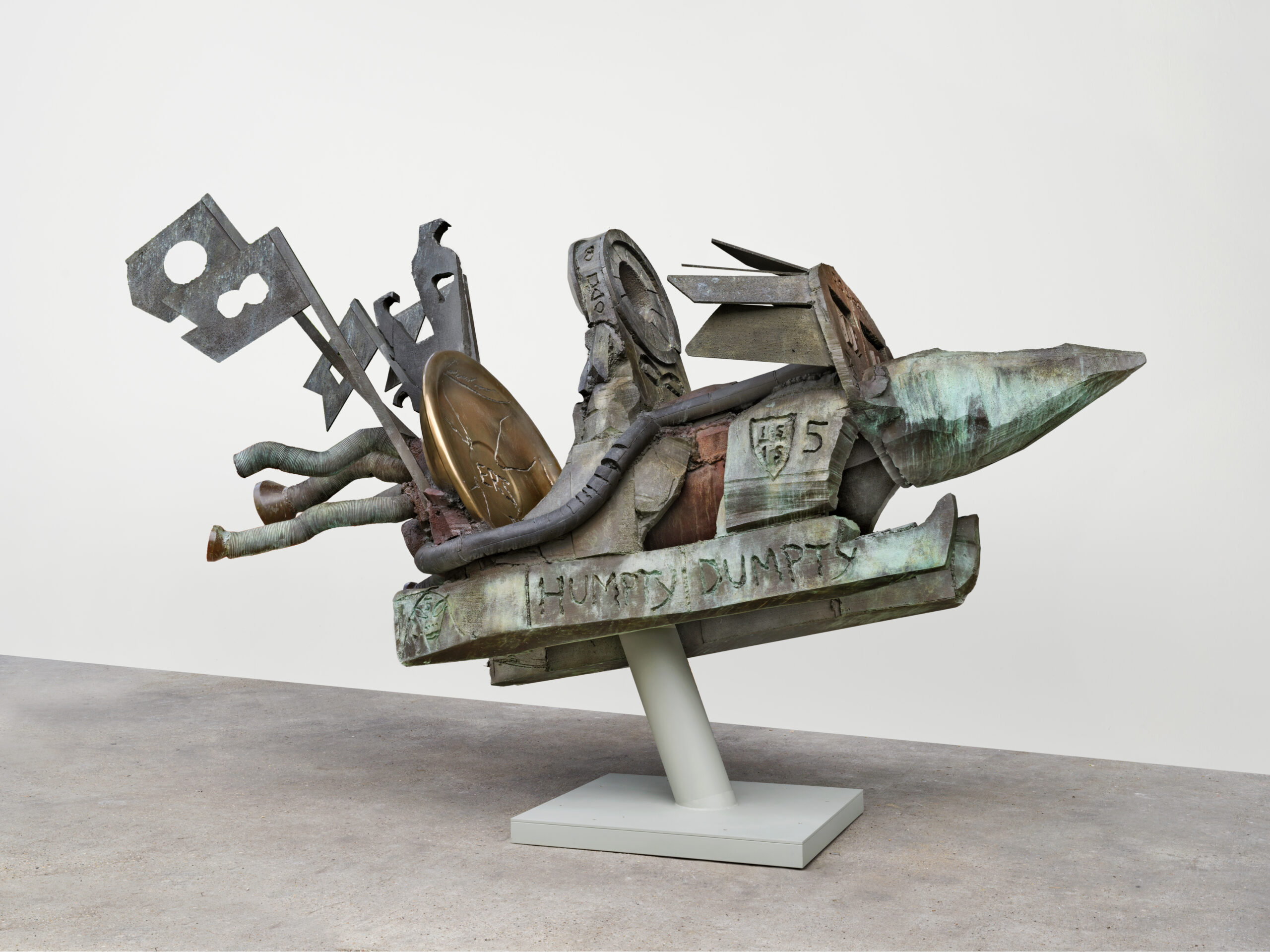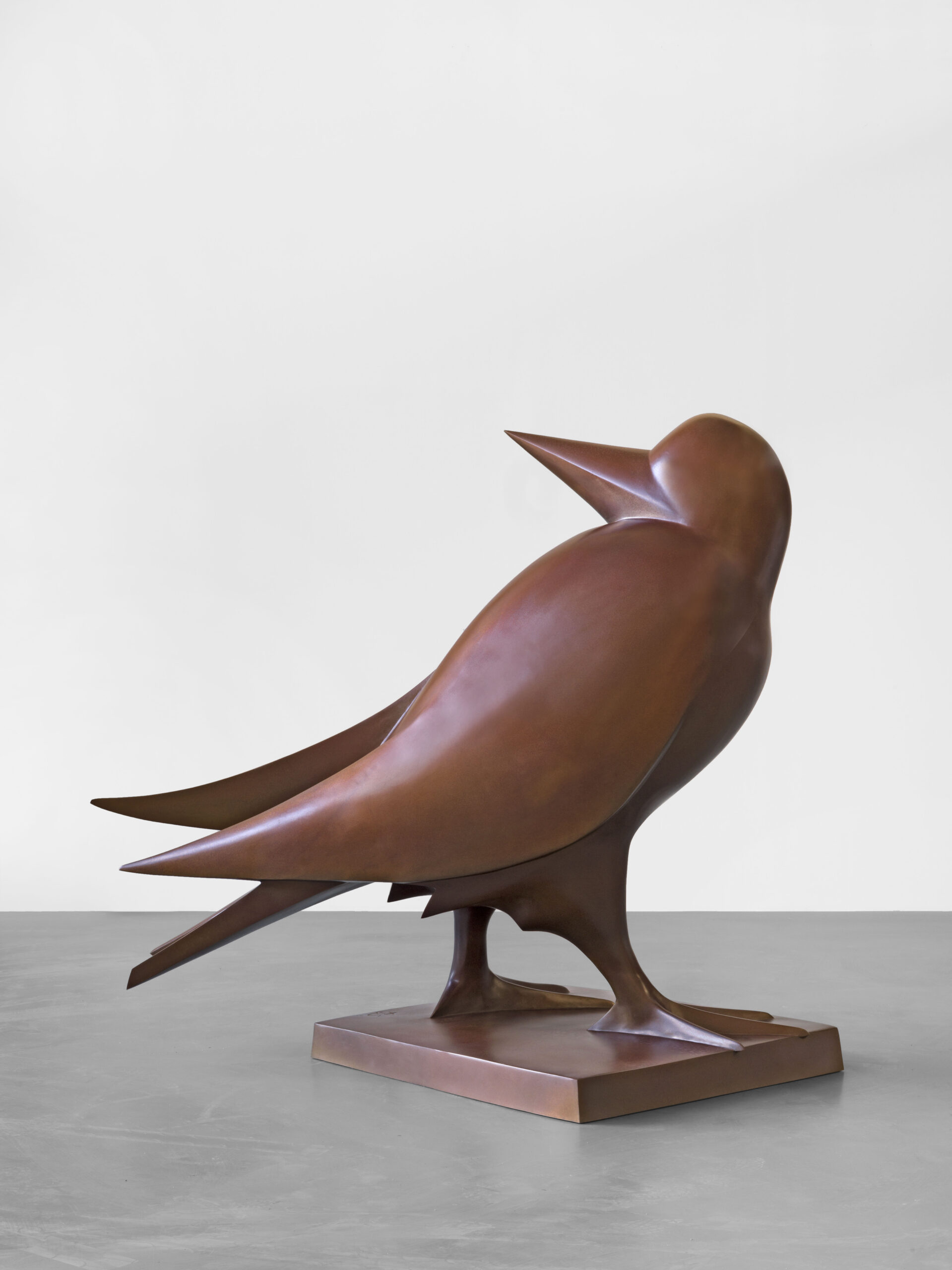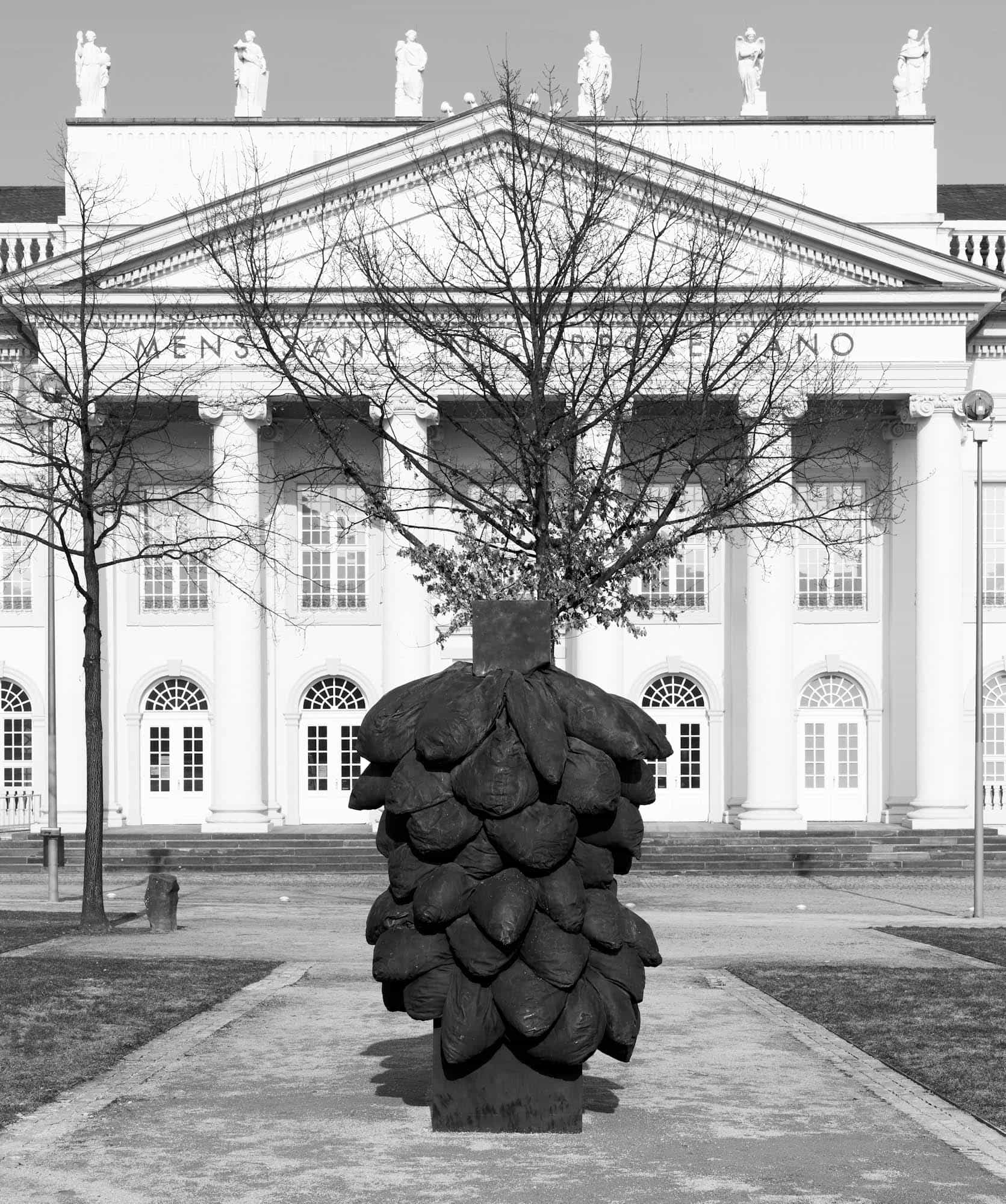










Under the title "Tales from the other Side", the Noack foundry and gallery in Berlin and the BS Kulturstiftung Darmstadt are presenting positions of international modern and contemporary sculpture in the Spanish Tower Sculpture Garden. The exhibited works by artists from different cultural backgrounds and generations from a period of 123 years are made of bronze and nickel silver and were all produced in the Noack foundry. Translated with DeepL.com (free version)
Connected by an aesthetic dimension of mystery, the exhibited artworks open up unexpected approaches to expanding the world through the unfamiliar. In the context of the exhibition, the "other side" is to be understood as an imaginary, constructed counter-world to what is generally referred to as "reality", whereby it is inseparably linked to it, like a shadow. In the most diverse formal language, artistic strategies become recognizable that are aimed at manifestations of inner life and their origin in fantasies, dreams and visions. There are diverse cultural-historical references, such as to concepts of psychoanalysis, human thinking in utopias or the effect of the knowledge of physical laws that cannot be experienced ad hoc on our world of thought. The works on display reveal the unfathomable in the supposedly familiar, reflect the belief in the power of human imagination and the influence of art and question the models in which we perceive.
Thematically, there are also links to the exhibition venue, the Spanish Tower and the sculpture garden around it.The origins of the Spanish Tower are shrouded in mystery.Presumably built in its foundations and first floor as an artificial ruin at the end of the 18th century, Charles of Hesse had the tower completed in 1954 and gave it its current name, "Château d'Espagne", which is a French expression that metaphorically stands for utopian, unrealistic ideas or the German term "Luftschloss" (castle in the air).It was built at the time of the emergence of artistic modernism.In 1857, Charles Baudelaire's poetry collection "Fleurs des Mal" was published, exploring the beauty of the dark, unconscious and abysmal aspects of the human psyche.The text breaks with all the aesthetic norms of the time, has a forward-looking effect and initiates a development of revolutionary changes in literature and the visual arts. Under the influence of the developing psychoanalysis, the study of dreams became the decisive paradigm of the second half of the 19th century. Sigmund Freud's "Interpretation of Dreams" was published in 1899 and marked the beginning of a never-ending crisis of consciousness in modern man, which was also accompanied by the discovery of the aesthetic potential of fantasies, dreams, reminiscences and hallucinations. The novel "The Other Side" by the artist Alfred Kubin also had a formative influence on the visual arts.Published in 1909, the text, in which Kubin creates an apocalyptic dream vision, provided important impulses for avant-garde movements such as Expressionism and Surrealism and continues to have an impact to this day.Against this backdrop, the exhibition presents a wide variety of interpretations of the connection between the ephemeral and the constant in the material of bronze and opens up space for new associations and contexts of meaning.
Curated by Gesa Zipp and Isabella Greenberg
with works by:
Anna Bogouchevskaia
Karol Broniatowski
Luciano Castelli
Per Dybvig
Rainer Fetting
Fotis
Leiko Ikemura
Georg Kolbe
Alicja Kwade
Heinz Mack
Jonathan Meese
Louis Tuaillon
Arie van Selm
Thomas Zipp